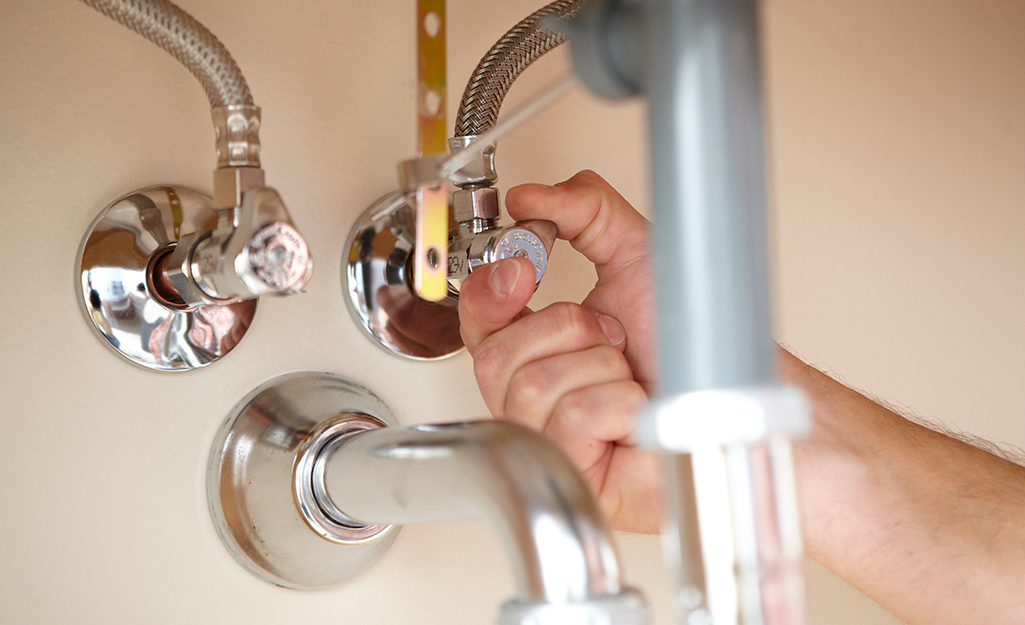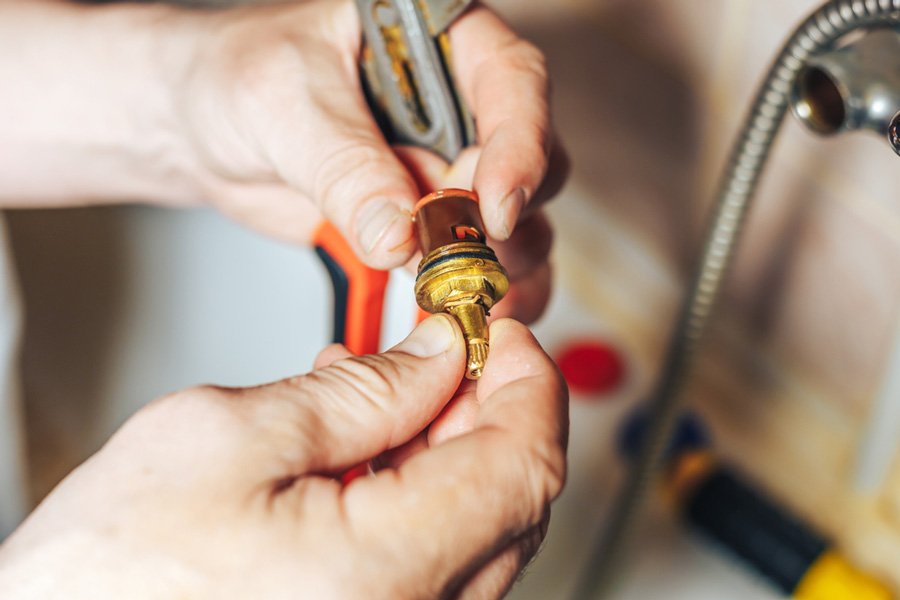How It's Vital to Fix a Dripping Faucet
How It's Vital to Fix a Dripping Faucet
Blog Article
Here down the page you can find some incredibly good advice all about Why Is It Important To Fix Your Leaking Tap/Faucet?.

Leaking taps might look like a minor trouble, but their impact surpasses just the nuisance of the audio. From wasting water to incurring unneeded economic expenses and wellness risks, neglecting a leaking faucet can result in different effects. In this post, we'll explore why it's vital to address this common house problem quickly and effectively.
Wastage of Water
Environmental Influence
Dripping taps contribute considerably to water waste. According to the Epa (EPA), a solitary faucet dripping at one drip per second can waste more than 3,000 gallons of water each year. This not only strains water resources but additionally influences environments and wildlife dependent on them.
Financial Prices
Enhanced Water Expenses
Past the environmental effect, trickling taps can blow up water bills substantially. The accumulated wastefulness with time equates into greater utility expenditures, which can have been prevented with timely repair work.
Prospective Residential Or Commercial Property Damages
Additionally, extended dripping can lead to damage to components and surface areas bordering the faucet. Water buildup can create discoloration, corrosion, and even structural concerns if left ignored, resulting in added repair service expenses.
Health Problems
Mold and Mold Growth
The constant visibility of moisture from a dripping tap develops an optimal environment for mold and mold growth. These fungis not just jeopardize interior air quality however additionally position health dangers, specifically for individuals with breathing problems or allergic reactions.
Waterborne Diseases
Stagnant water in leaking taps can come to be a breeding ground for germs and various other virus, raising the threat of waterborne illness. Impurities such as Legionella microorganisms grow in stationary water, possibly bring about significant diseases when consumed or breathed in.
DIY vs. Professional Repair
Benefits and drawbacks of DIY Fixing
While some might attempt to fix a trickling tap themselves, do it yourself fixings feature their very own set of difficulties. Without proper expertise and tools, do it yourself efforts can intensify the issue or lead to insufficient repairs, lengthening the issue.
Benefits of Working With a Professional Plumber
Working with a specialist plumber makes sure that the underlying cause of the trickling faucet is dealt with effectively. Plumbing professionals have the expertise and tools to identify and repair tap problems successfully, conserving time and decreasing the threat of more damages.
Step-by-Step Guide to Repairing a Dripping Tap
Tools Called for
Before attempting to take care of a dripping faucet, gather the necessary tools, including an adjustable wrench, screwdrivers, replacement parts (such as washing machines or cartridges), and plumber's tape.
Typical Tap Issues and Their Solutions
Identify the sort of faucet and the particular issue creating the drip. Typical troubles include damaged washers, rusty valve seats, or damaged O-rings. Refer to supplier instructions or on the internet tutorials for detailed assistance on fixings.
Preventive Measures
Routine Upkeep Tips
To stop trickling faucets, carry out routine maintenance such as cleaning aerators, examining for leaks, and replacing damaged parts immediately. In addition, take into consideration installing water-saving devices or upgrading to more efficient fixtures.
Significance of Prompt Repair Works
Dealing with dripping taps as quickly as they're observed stops additional water wastage and possible damages, inevitably saving both water and money in the future.
Effect On Residential Property Value
Perception of Well-Maintained Building
Keeping a home in good condition, including dealing with upkeep problems like leaking faucets, boosts its viewed worth and worth amongst possible purchasers or lessees.
Influence on Resale Worth
Qualities with well-maintained plumbing fixtures, consisting of taps, command greater resale values in the realty market. Resolving dripping faucets can contribute to a positive perception during property evaluations and settlements.
Environmental Obligation
Private Contribution to Preservation
Taking obligation for taking care of leaking faucets aligns with broader initiatives towards water conservation and environmental sustainability. Every person's actions collectively make a substantial influence on maintaining valuable sources.
Lasting Living Practices
By focusing on prompt fixings and embracing water-saving habits, people contribute to lasting living practices that profit both present and future generations.
Final thought
Attending to a trickling tap goes beyond simple ease; it's a vital action toward saving water, lowering financial expenses, and guarding wellness and residential or commercial property. Whether via DIY repairs or expert aid, taking action to take care of trickling taps is a tiny yet impactful means to advertise liable stewardship of sources and add to a healthier, much more sustainable future.
How to Fix a Leaky Faucet: Step-by-Step Repair Guide
A leaky faucet may seem like a simple annoyance, but if it's not fixed promptly, that leak could cost hundreds to potentially thousands. From water damage to mold, mildew, and high water bills, even a tiny leak can be catastrophic if left unattended. Damage like this can even affect the overall value of your home, so it's important to take the right approach for leaky faucet repair. You may need the help of a plumber in some cases, but we've got a few tips you can try on how to fix a leaky faucet before calling the pros.
Four Faucet Types
When you're learning how to fix a leaky faucet, the first step is knowing what kind of faucet you're working with! There are four common types.
Cartridge Faucets
Cartridge faucets come in one- or two-handled varieties. In one-handled cartridge faucets, hot and cold water combines in a single cartridge. In the two-handled versions, hot and cold water are controlled separately and mixed in the faucet.
Ball Faucets
Ball faucets have a single lever you push up and down to adjust the pressure and rotate to change the temperature. A slotted metal ball controls the amount of water allowed into the spout.
Compression Washer Faucets
They're the oldest type of faucet, but they're still used in many homes — especially older ones. Compression faucets have two separate handles that, when turned, raise or lower the washer that seals a water valve. This valve stops water from flowing through the faucet when it is turned off.
Disc Faucets
Disc faucets rarely need to be repaired due to their maintenance-free design. The water flow is controlled by two discs — the upper one raises and lowers against a fixed lower disc, creating a watertight seal. If your disc faucet starts leaking, you may need to replace the seals or clean residue buildup from the inlets.
Fixing a Leaky Faucet
Step 1: Turn Off the Water
Whether you're learning how to fix a leaky bathtub faucet or how to fix a leaky kitchen faucet, always turn off the water supply to your working area when you're fixing a leak. The last thing you want is a flood added to your list of things to fix.
Look for the shutoff valves below your sink or around the tub and turn them clockwise to stop the water flow. If your faucet doesn't have shutoff valves, you may need to turn off the water for the whole house. Check to make sure it's off by turning the faucet on. If nothing comes out, you're ready to start the repair.
Step 2: Take Apart the Faucet
How you disassemble your faucet depends on the type of fixture you have. You can use a flathead screwdriver to remove the caps on top of the handle or handles for cartridge and compression faucets. Inside, you should see handle screws. Unscrew these with a screwdriver to remove the handle.
Disc- and ball-style faucets will typically have an inlet screw near the handle, and removing that will reveal the interior of the faucet.
Detach the Valve Stem
For cartridge- and compression-style faucets, you'll see the inner valve stem or cartridge once you remove the faucet handles. If you have a compression faucet, unscrew the brass valve stem. If you have a cartridge faucet, pull out the cartridge. If your cartridge has been in place for a while, it may require some tools or extra force to remove it due to mineral deposits.
Examine and Replace Parts
Once you've removed the parts, check them out to confirm what needs to be replaced. You may see corroded rubber washers, O-rings, stems, or cartridges. On a ball-style faucet, check the seats and springs for damage.
If you need to repair a leaky disc faucet, check the inlet and seals on the lower disc.
Once you determine what parts must be replaced, visit your local hardware store. Bring the damaged parts with you to ensure you can purchase the correct components to replace them.
Clean Valves and Faucet Cavity
If you've removed a stem or cartridge, you may notice mineral buildup in the faucet's threads. Use white vinegar to clean the valve seat by soaking it for a few minutes, then scrub it away with a soft toothbrush and rinse with warm water. You can also clean the interior of the faucet in the same way.
Reassemble the Faucet
Once your faucet is cleaned and the required parts have been replaced, it's time to reassemble it. Put the pieces back together and slowly turn the water supply back on. Doing this slowly is crucial because too much initial water pressure can damage the new hardware you've just installed.
https://homewarranty.firstam.com/blog/how-to-fix-leaky-faucet

I discovered that review about Leaky Faucets: Why They Happen & What to Do About Them when doing a lookup on the search engines. Do you know another individual who is serious about the topic? Why not promote it. Thanks a bunch for being here. Please check up our blog back soon.
Report this page